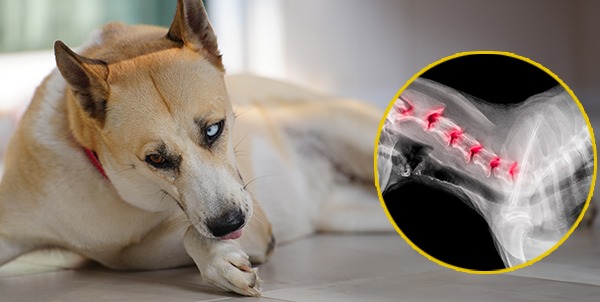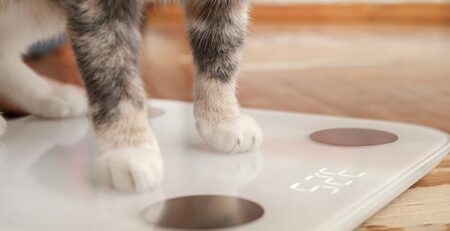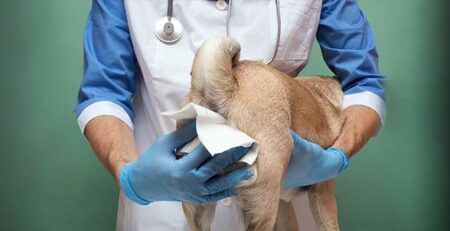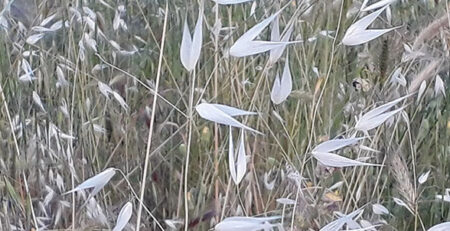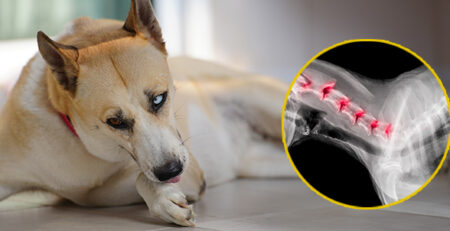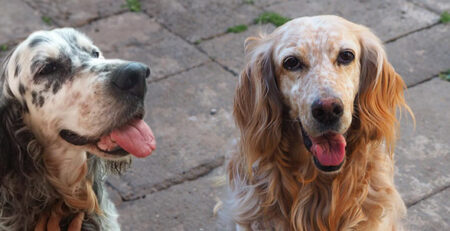Wobbler’s syndrome in dogs or Caudal Cervical Spondylomyelopathy: is a neurological disorder mainly affecting large and giant breed dogs
Wobbler syndrome in dogs consists of alteration of the cervical vertebrae resulting in narrowing of the spinal canal and compression of the spinal cord.
Compression of the vertebrae on the spinal cord results in damage to the nerve roots (compressive myelopathy), the consequence of which is slow and progressive incoordination of the dog, especially on the hind limbs.
The peculiar gait assumed by the dog in English is defined by the adjective ” wobbly,” or staggering hence the term
wobbler
by which this condition is referred to.
A neurological symptomatology of varying severity
Clinical signs are related to the severity, duration and dynamic characteristics of spinal cord compression.
An early sign, often overlooked, is licking of the ends of the front legs: the dog initially feels tingling, numbness or tingling and attempts to relieve the discomfort by licking.
Generally speaking, the most obvious symptoms of the condition are an extended neck and a low head.
And again, you notice the first alterations in gait.
Initially, they involve only the posterior train, and later, as the pathology progresses, the deficit also becomes evident in the forelimbs.
Static or dynamic compression
Compression on the cord can bestatic, when it is not affected by the position of the dog’s neck, or dynamic, when it is affected especially in extension.
The most involved intervertebral space is between the sixth and seventh cervical vertebrae (C6-C7); sometimes the tract between the fifth and sixth (C5-C6) is also affected, very rarely the C4-C5 and C7-T1 tracts.
Causes of Wobbler syndrome
Cervical spine instability can depend on different causes and factors:
-
- Vertebral morphological changes
- Disc protrusion
- Disc extrusion
- Facet joint malformation or arthrosis
These factors, present singly or in combination, are responsible for more or less pronounced compression.
Great Dane and doberman the most affected
The syndrome affects large and giant breed dogs at a young age(Great Dane, St. Bernard, Mastiff) and more frequently Doberman breed dogs but also Dalmatian, Weimaraner, Rottweiler, and Labrador generally after 5-6 years of age.
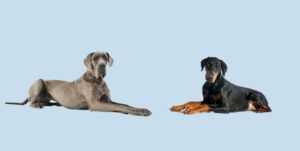
The most widely accepted hypothesis is that in breeds with long, thin necks, morphological changes in the cervical spine occur during growth such that they result in compression of the spinal cord, which results in the onset of the syndrome.
Clinical signs and imaging
The most frequently encountered clinical sign is impaired walking, characterized by obvious incoordination more or less associated with tetraparesis.
Neck stiffness and pain, the latter never particularly marked, may be evoked by palpation and manipulation of the neck during the examination.
MRI allows the Veterinarian to locate the neurological lesion, visualize the sites of compression, and the severity of the pathology.
What treatment for Wobbler’s syndrome
In less severe cases, drug therapy combined with restriction of the dog’s movement and an absolute ban on the use of a collar is contemplated.
For the most critical cases, surgical treatment of vertebral stabilization through implantation of true disc prostheses or of
cages
.
Le
cages
are titanium cages that are placed in place of an intervertebral disc with the purpose of stabilizing the two vertebral bodies and creating a bony callus.
Because Wobbler’s is a disease with a chronic progressive course, it is essential to issue a firm diagnosis as early as possible to achieve the best treatment results.
To refer your dog for a checkup, contact the veterinary doctors on our staff who are always available to you.
We would also like to remind you that Clinica La Veterinaria is always open h24 every day including holidays and with First Aid service from 8 pm to 8 am.

